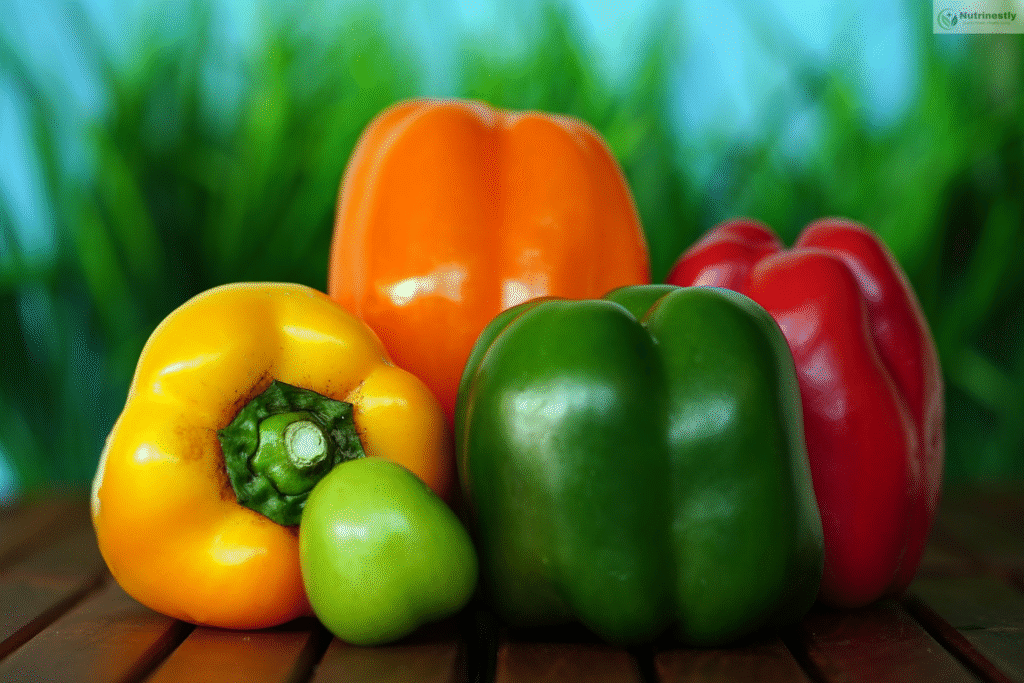
1. Overview of Sweet Peppers
Imagine biting into a crunchy, brightly colored, juicy vegetable that not only adds some color and delectability to your meal but also packs some nutritional punch. Welcome to the amazing world of sweet peppers! Sweet peppers are renowned for being sweet and colored, and they are a fixture in kitchens globally.
What are sweet peppers?
Sweet peppers are called bell peppers or capsicums, and they fall under the group Capsicum annuum. While their hot relatives pack some kind of burn-inducing heat, sweet peppers have no capsaicin, the same chemical responsible for the spiciness of those other peppers. They’re good for every use from children’s lunches to evening specials.
History in a nutshell:
Having originated in Central and South America, sweet peppers were already being grown as far back as 5,000 B.C. Sweet peppers were valued not only for their taste by ancient cultures such as the Incas and Aztecs but also for their spiritual and medicinal benefits. With explorers such as Christopher Columbus bringing them to Europe, peppers rapidly became a part of various cuisine traditions, from Asian stir-fries to Mediterranean stews.
Nutritional benefits
Sweet peppers contain no calories but are abundant in nutrients that are vital for the body like vitamin C, vitamin A, and fiber. Their antioxidant capacity makes them an excellent food to incorporate into a healthy diet. They can make your skin healthier, enhance your immune system, and reduce inflammation.
Interactive Reflection:
Think about your last three meals. Did any of them contain sweet peppers? If not, you’re missing out on both flavor and health benefits!
2. Types of Sweet Peppers
Sweet peppers come in many varieties, each with its own taste, texture, and use. Understanding these differences can enhance your cooking and gardening experience.
Common varieties:
- Bell Peppers: The most popular variety. Crunchy and sweet, perfect raw or cooked.
- Banana Peppers: Sweet and tangy. Often pickled or placed in sandwiches.
- Cubanelle Peppers: Light green, sweet, and thin. Often found in Latin cuisine.
- Mini Sweet Peppers: Bite-sized peppers, small enough to use raw or stuff.
- Lipstick Peppers: Firm-fleshed and sweet-flavored.
Color range and meaning:
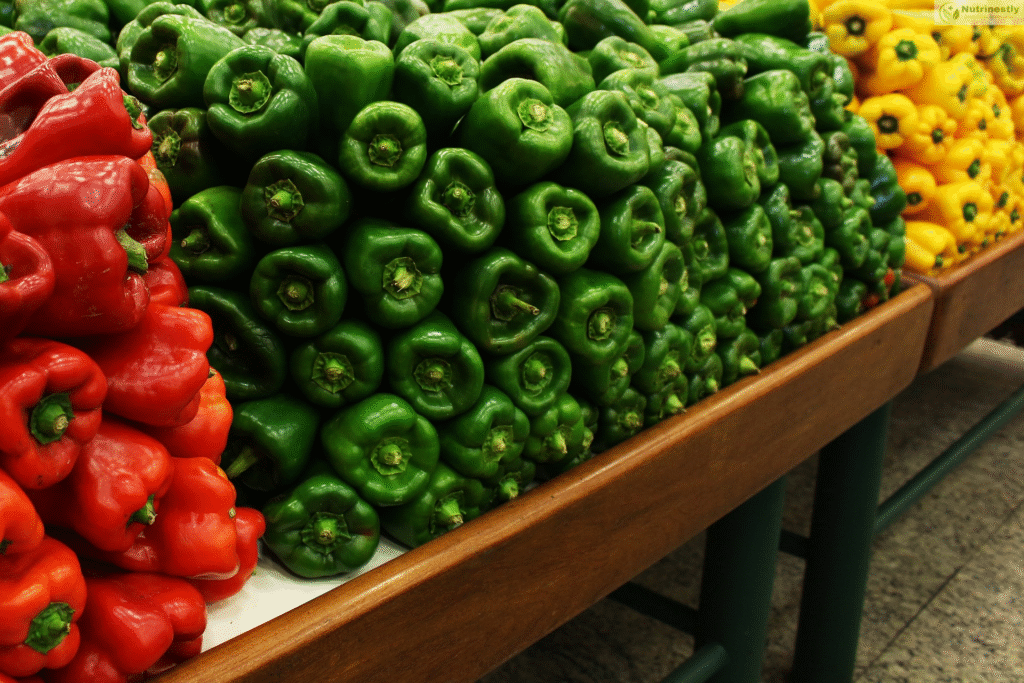
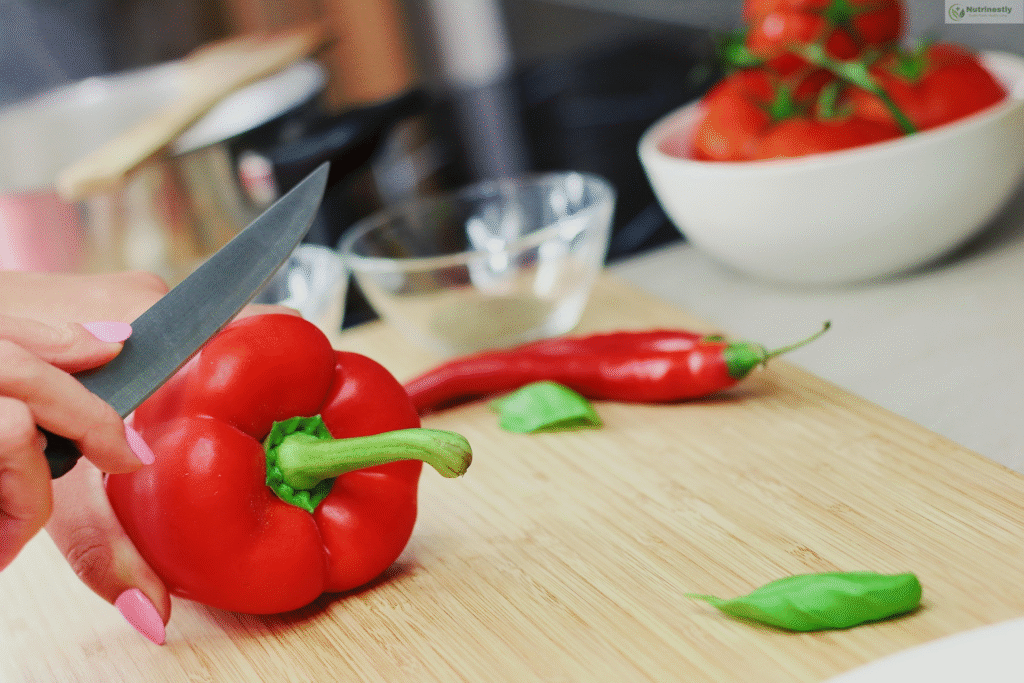
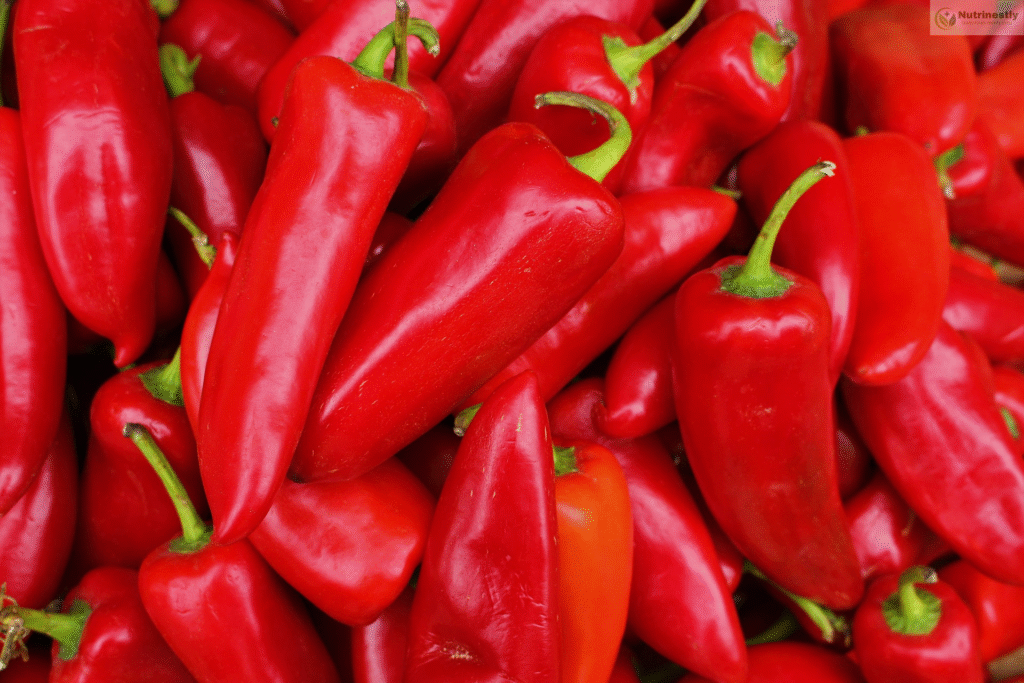
Sweet peppers begin as green and go red, yellow, orange, or even purple or brown. Green bell peppers are unripe red ones. Did you know that?
- Green: A little bitter and crunchy. Less sweet, but great to cook with.
- Red: Full-ripe, sweetest, and richest in nutrients.
- Yellow & Orange: Mid-season, less sweetness.
- Purple & Brown: Exotic and full of earthy, weird flavors.
Flavor profiles:
- Every color has its charm:
- Red peppers are great to roast and to put into soups.
- Green ones are awesome in stir-fries and pizza.
- Orange and yellow peppers shine in fresh salad and salsas.
Pepper Taste Challenge
Buy all the colors you can find. Roast, grill, or chop them raw. Which do you like best? Share your taste rankings on social media with #PepperTasteTest.
3. Growing Sweet Peppers
If you’ve ever considered growing your food, sweet peppers are an excellent place to start. They’re simple to grow and satisfying when harvested.
Best growing conditions:
- Climate: Sunny, warm locations with temperatures of 70–85°F (21–29°C).
- Soil: Rich, well-drained soil with a pH of 6.0 to 6.8.
- Sunlight: At least 6–8 hours of direct sunlight daily.
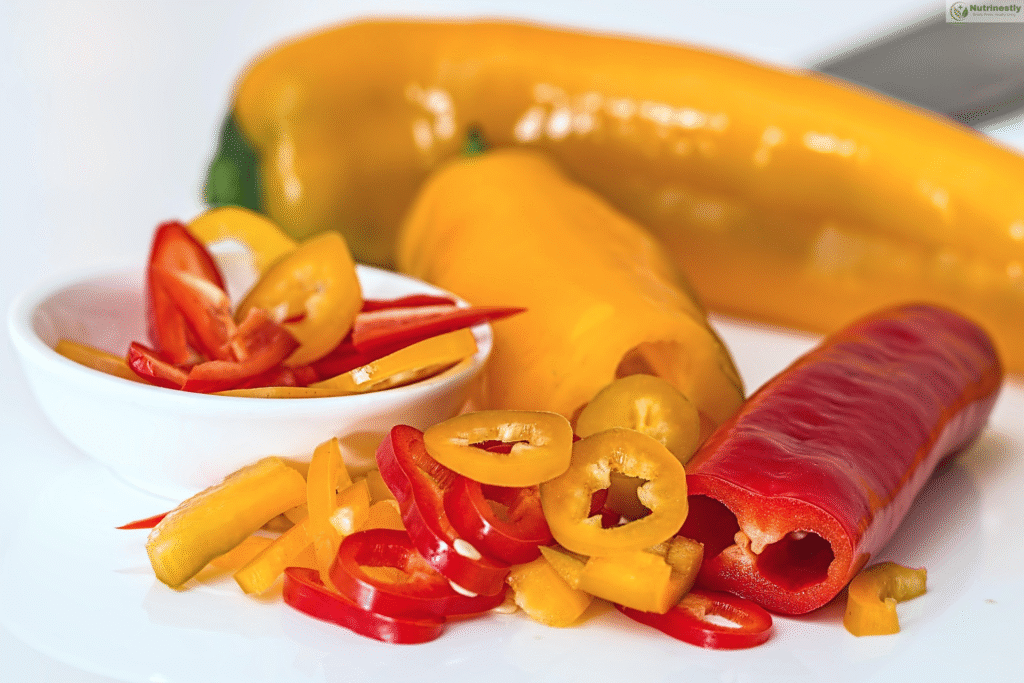
Seed starting and transplanting details:
- Sow seeds indoors 6–8 weeks before the last frost date.
- Harden off seedlings by gradually exposing them to the outdoors.
- Transplant when temperatures at night are well over 60°F.
Watering and fertilizing:
- Use a balanced fertilizer (10-10-10).
- Infrequent deep watering to encourage well-established root systems.
Common diseases and pests
- Pests: Aphids, spider mites, flea beetles.
- Diseases: Bacterial leaf spot, blossom end rot, anthracnose.
Organic solutions:
- Use neem oil spray or garlic soap for pests.
- Crop rotation and spacing for minimizing disease threats.
Gardener’s Diary Tip:
Keep a gardening journal for your pepper plants. Monitor growth, watering, pests, and yields. It’ll enhance your gardening prowess over time!
4. Cooking with Sweet Peppers
Sweet peppers can transform a plain meal into a vibrant, flavorful masterpiece. With versatility in global cuisine, they’re a staple in every kitchen.
Culinary applications:
Raw: Fresh salsas, vegetable platters, sandwiches.
Roasted: Enhances sweetness—excellent for pasta sauces.
Grilled: Excellent for skewers or BBQ sides.
Stuffed: Fill with grains, meat, or cheese.
Choosing and storing tips:
- Choose peppers firm, smooth, and of bright colors.
- Avoid choosing peppers wrinkled, blemished, or soft.
- Refrigerate in the crisper drawer. Use within a week for the best flavor.
Easy and delicious recipes:
- Grilled Sweet Pepper Skewers – Combine bell peppers with onions, zucchini, and mushrooms.
- Stuffed Peppers with Quinoa & Feta – A veggie delight packed with flavor.
- Sweet Pepper & Basil Soup – Creamy, savory, and soothi
- Pepper Nachos – Replace chips with sliced mini peppers. Add cheese, beans, and jalapeños.
Get Creative:
Host a “pepper party” and have friends over to bring a creative sweet pepper dish. Share photos with #PepperFeast.
5. Nutrition of Sweet Peppers
Sweet peppers are more than a taste sensation—they’re a nutritional powerhouse.
Macronutrient breakdown (per 100g):
- Calories: 31
- Carbs: 6g
- Protein: 1g
- Fat: 0.3g
- Fiber: 2.1g
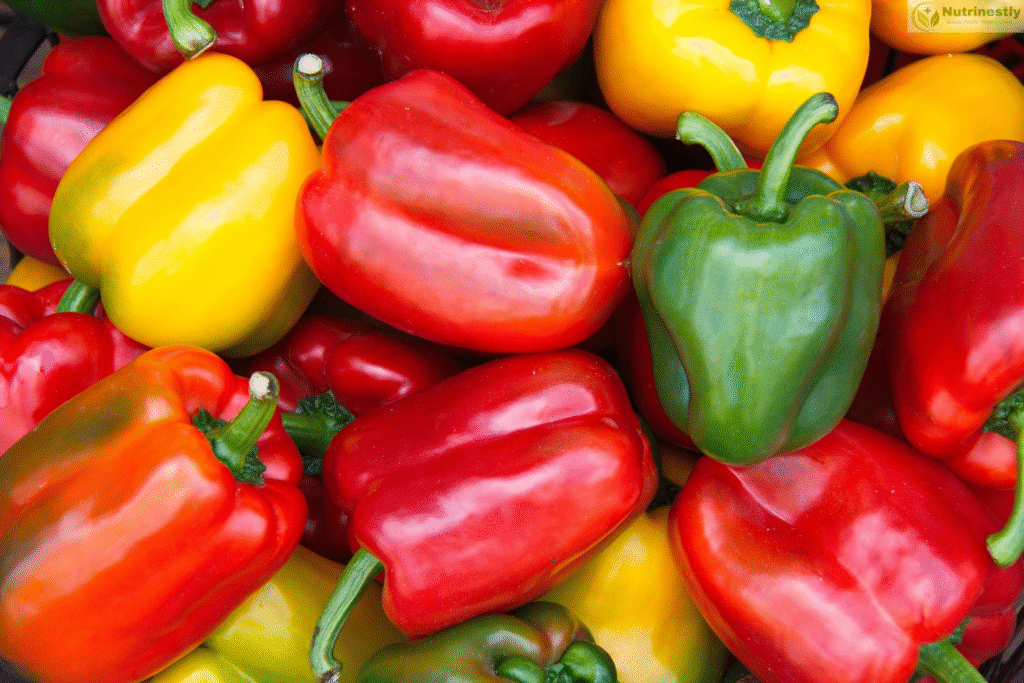
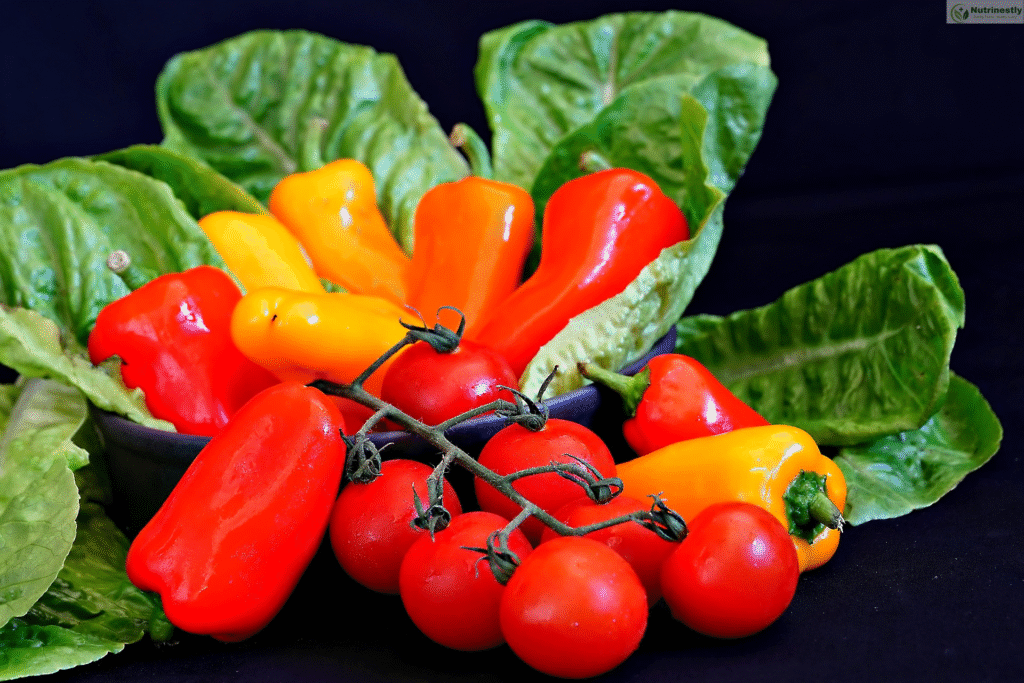
Vitamins and minerals:
- Vitamin C: Keeps skin and the immune system healthy. One red pepper = 3x times’s vitamin C.
- Vitamin A: Critical for vision and cell development.
- Vitamin B6: Supports metabolism.
- Folate: Essential for cell development, particularly during pregnancy.
- Potassium: Maintenance of heart function and fluid balance.
- Antioxidants: Lutein, zeaxanthin, and beta-carotene protect cells from damage.
Health benefits:
- Strengthens the immune system
- Improves digestion
- Cuts inflammation
- Supports weight loss
- Promotes healthy skin and vision
Myth Buster:
“Peppers are all carbs!” No way. They have a low glycemic index and consist mostly of fiber and natural sugars, which makes them diabetic-friendly.
6. Sweet Peppers in Global Cuisine
Sweet peppers have found their way into nearly every nook and corner of the globe.
Global cuisines that incorporate sweet peppers:
Mexico: Sautéed bell pepper-stuffed fajitas and tacos.
France: Eggplant, zucchini, tomato, and pepper ratatouille.
Spain: Smoked roasted vegetable Escalivada.
China: Stir-fries with chicken or tofu and peppers.
Italy: Peperonata, a stewed pepper side dish.
Greece: Gemista, stuffed vegetables like peppers.
Cultural tidbits:
In Eastern Europe, peppers are pickled for winter consumption. In the Caribbean, they’re blended into hot-sweet sauces. In India, they’re often used in vegetable curries.
Try It At Home:
Have a “World Pepper Platter” night. Serve tapas, curries, stir-fries, and salads each with sweet peppers.
7. Storing Sweet Peppers
Don’t let those sweet peppers go to waste; store them!
Preserving techniques:
- Canning: In brine or tomato sauce.
- Freezing: After slicing or dicing.
- Drying: Dry in a low-temperature oven or dehydrator.
- Pickling: Spice with spices, garlic, and vinegar for sour preserves.
Preservation tips:
- Date label.
- Airtight containers for storage.
- Blanch before freezing for texture preservation.
- How to use preserved peppers:
- Use them in tossing into pastas or soups.
- Use them in adding to sandwiches and wraps.
- Blend into dips such as hummus or baba ghanoush.
Pro Tip:
Peppers that are preserved have kept their flavor but may lose crispness. Use them in cooked dishes as opposed to fresh salads.
8. Sweet Peppers and Sustainability
Sweet peppers are very much in the tradition of sustainable living practices.
Why buy local and organic?
- Fewer transport emissions.
- Less pesticide use means soil and water are healthier.
- Supports local farmers and the economy.
Benefits of growing your own:
- You control pesticides and fertilizers.
- Less food waste, pick what you want.
- Educational and therapeutic benefits.
Environmentally friendly tips:
- Use compost to enrich.
- Install rainwater harvesting systems.
- Reuse garden refuse as mulch.
- Sustainability Challenge:
- Document your first harvest or composted pepper scraps. Post on social using #EcoPepperLife.
9. Sweet Pepper Trends and Innovations
The unassuming pepper is going mainstream.
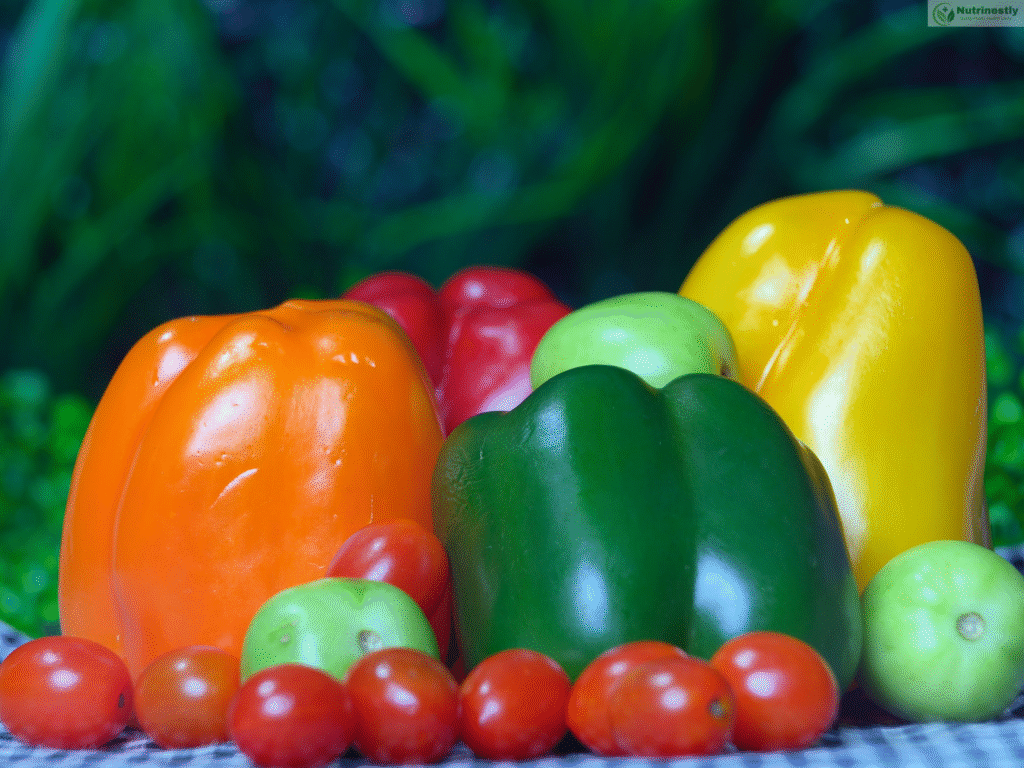
Current trends:
- Sweet mini peppers as school lunchbox food.
- Pepper-infused energy drinks (with capsaicin-free extracts).
- Fermented pepper sauces for gut health.
Agricultural innovations:
- Non-GMO hybrid development with higher vitamin content.
- Vertical pepper farming in cities.
- Pepper plantations are monitored by drones for precision irrigation.
Technology in the kitchen:
- Air-fried stuffed peppers.
- Additive-free dehydrated pepper snacks.
- AI recipe generators with sweet peppers.
Forecast
Seek “biofortified” peppers with health benefits targeted at specific needs (e.g., high-iron peppers), and other high-end applications in fusion cuisines.
10. Conclusion
Sweet peppers are not only beautiful ingredients, they are epicurean delights, health heroes, and cultural icons. From the garden in your backyard to gourmet restaurants, sweet peppers have taken a place at our table and in our affections.
Summary:
- Nutritious, versatile, and easy to cultivate
- Culturally precious and globally appreciated
- Marvelous for your health and the planet
Your Turn
Experiment with a new type, plant one, or cook a recipe. Sweet peppers offer a universe of experiences waiting to be unlocked.
Call to Action:
Join the sweet pepper revolution! Share your recipes, gardening adventures, or creative dishes with #SweetPeppersLove. Share the color, crunch, and joy!

